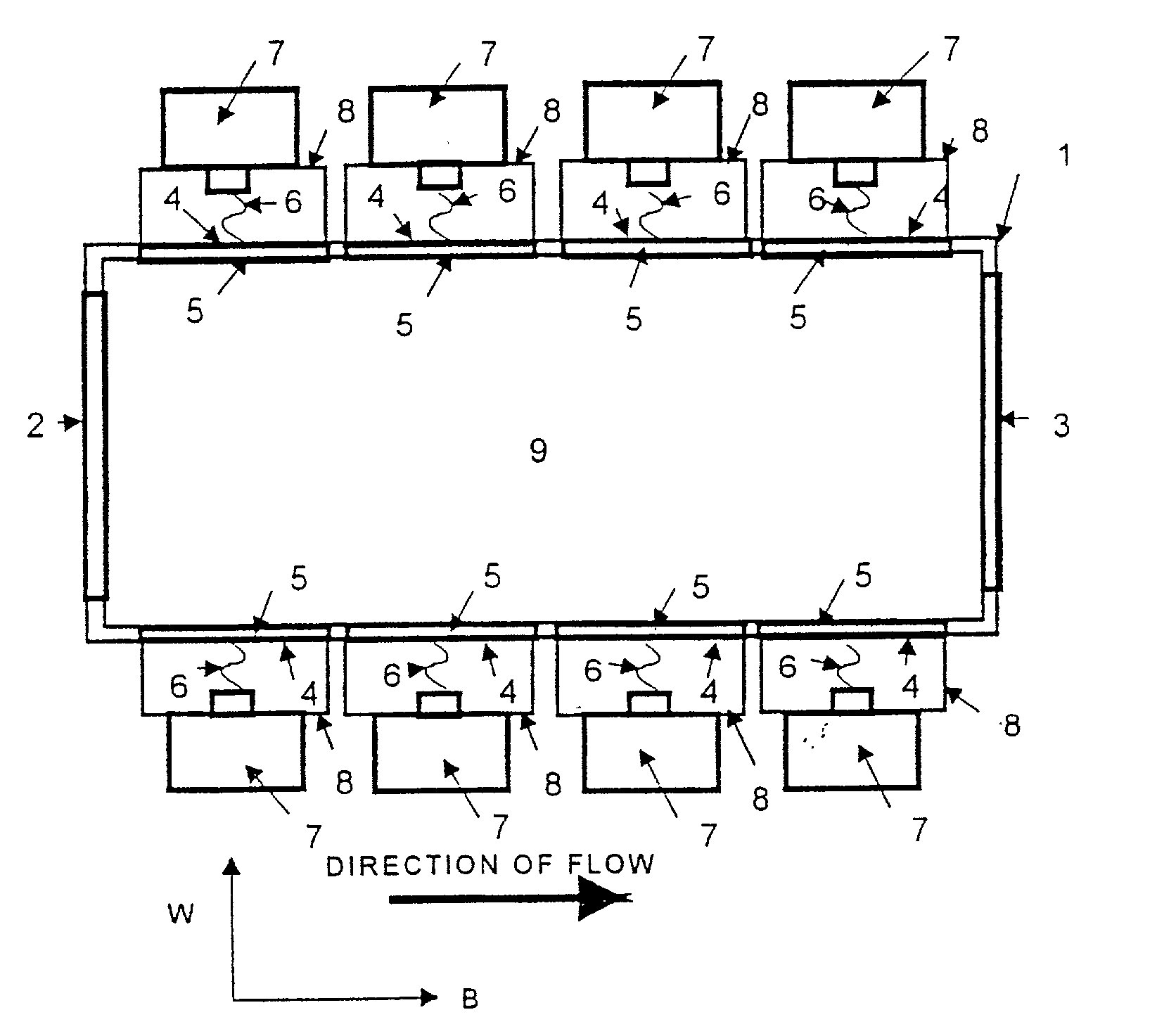Heat transfer with artificial dielectric device
a dielectric device and heat transfer technology, applied in the direction of electric/magnetic/electromagnetic heating, physical/chemical process catalysts, separation processes, etc., can solve the problems of limiting the effect of the device, the susceptor's structure cannot allow the application of energy to penetrate into the entire volume, and the device's design to be self-limiting temperature, etc., to achieve the effect of preventing heat loss, facilitating the susceptor, and preventing heat loss
- Summary
- Abstract
- Description
- Claims
- Application Information
AI Technical Summary
Benefits of technology
Problems solved by technology
Method used
Image
Examples
Embodiment Construction
with Example 5, one finds that a greater percentage of SiC in the macroscopic susceptor produced a faster heating rate and a higher temperature the macroscopic susceptor.
1TABLE 1 Weight % of Time to each unit sus- show a ceptor type in red glow Temp. Ex- macroscopic in the after one ample susceptor device hour Comments 4 100% AS-6 SiC 51 min 803.degree. C. 5 100% AS-12 SiC 27 min 858.degree. C. 6 100% AS 29 min >1260.degree. C. susceptor's temperature exceed the limit of the type-K thermocouple 7 50% AS 36 min 1006.degree. C. 50% AS-12 SiC 8 50% AS 39 min 1008.degree. C. temperature after 50% AS-12 SiC 3 hours 9 50% AS 32 min 1006.degree. C. temperature after 50% AS-12 SiC 4 hours and 30 minutes 10 56% AS 6 min 1142.degree. C. 23% AS-30Cr.sub.2O.sub.3 12% AS- 30Chromate 6% AS-30Fe.sub.2O.sub.3 and Chromate 3% AS-30Fe.sub.2O.sub.3 11 18% AS- <2 min, had to 2 of the 16 30Chromate then the shut magnetron tubes 19% AS-30 Cr.sub.2O.sub.3 glow down melted from the 32% AS- dis- after 30 ba...
PUM
| Property | Measurement | Unit |
|---|---|---|
| thickness | aaaaa | aaaaa |
| thickness | aaaaa | aaaaa |
| diameter | aaaaa | aaaaa |
Abstract
Description
Claims
Application Information
 Login to View More
Login to View More - R&D
- Intellectual Property
- Life Sciences
- Materials
- Tech Scout
- Unparalleled Data Quality
- Higher Quality Content
- 60% Fewer Hallucinations
Browse by: Latest US Patents, China's latest patents, Technical Efficacy Thesaurus, Application Domain, Technology Topic, Popular Technical Reports.
© 2025 PatSnap. All rights reserved.Legal|Privacy policy|Modern Slavery Act Transparency Statement|Sitemap|About US| Contact US: help@patsnap.com



